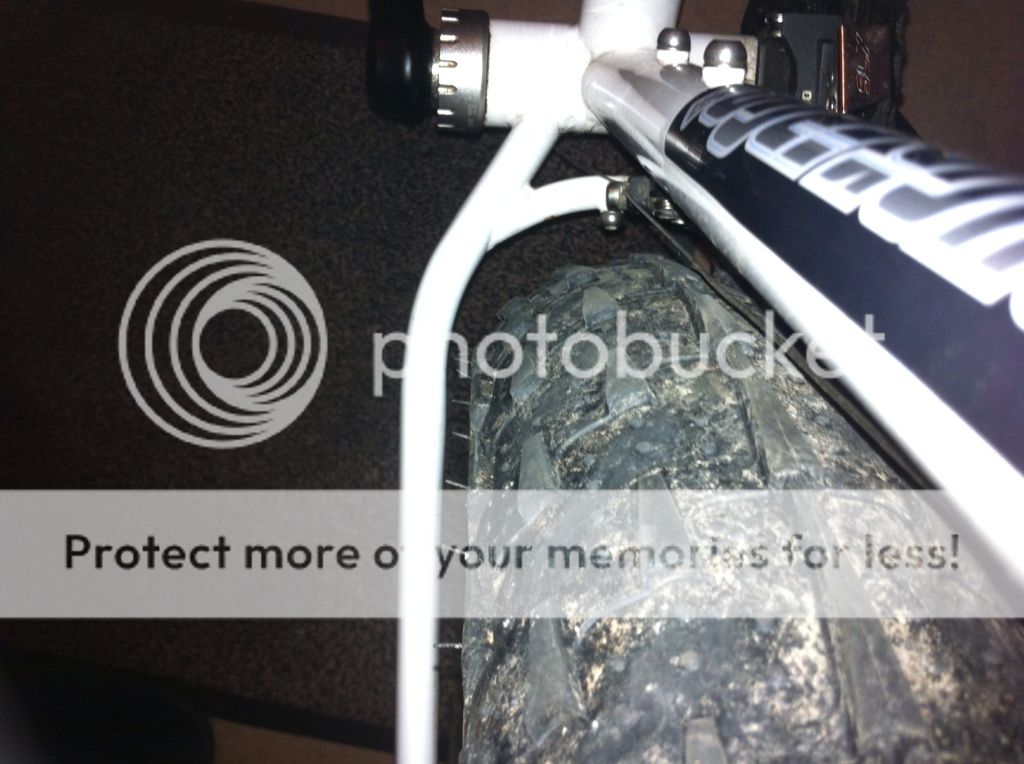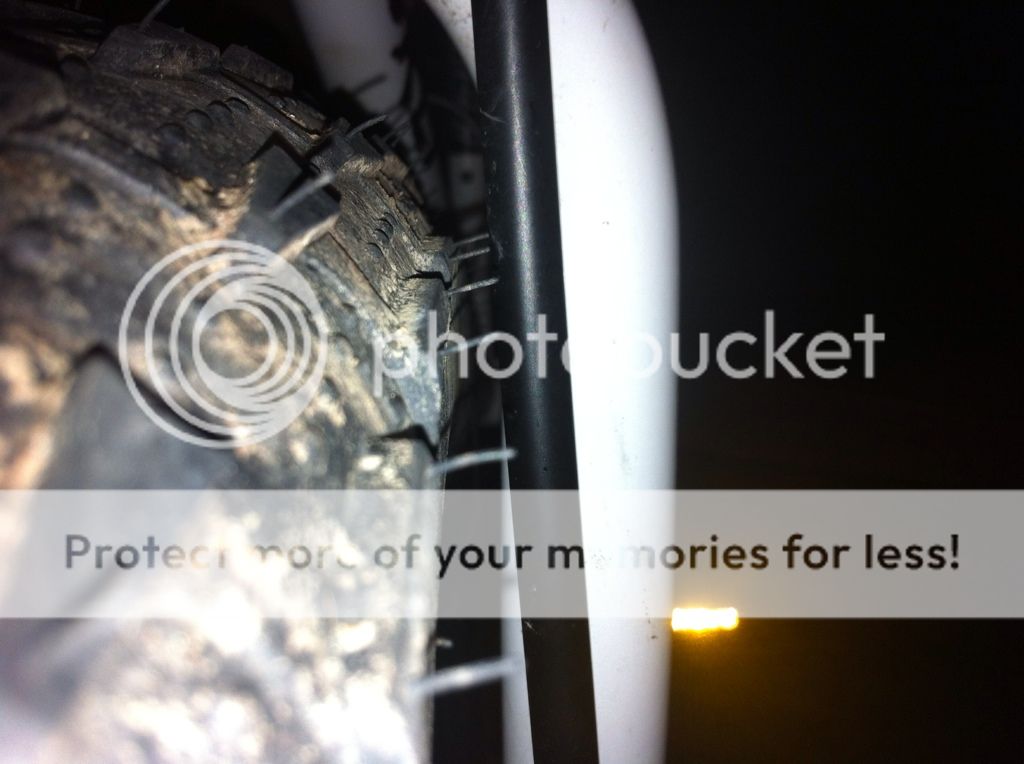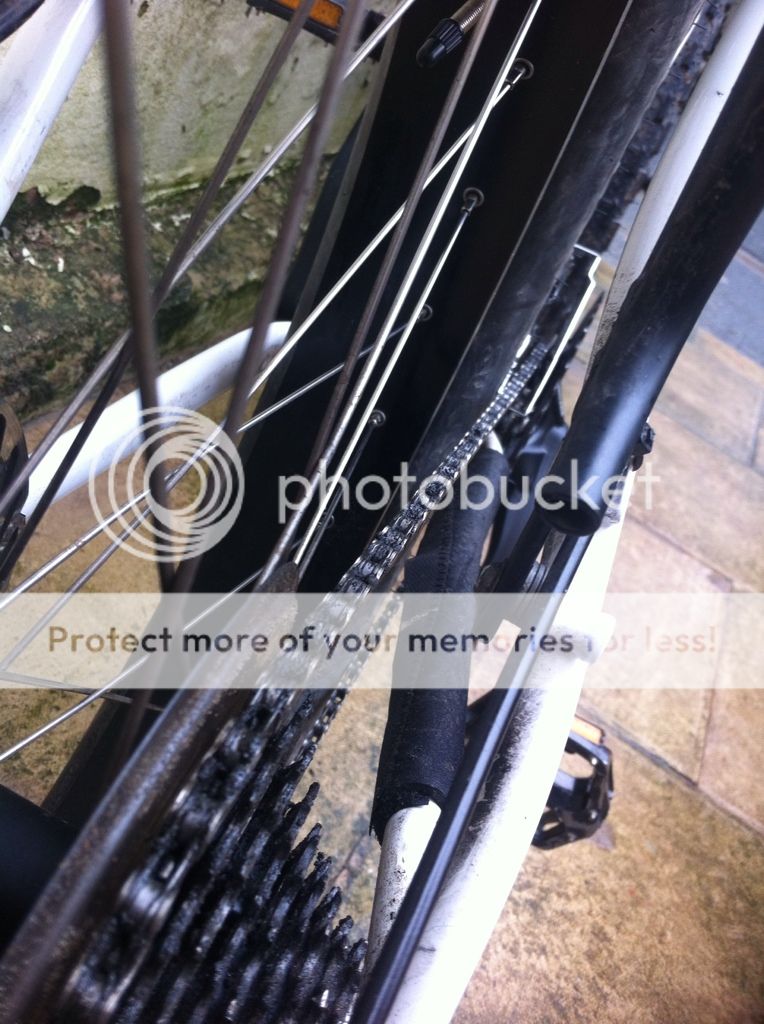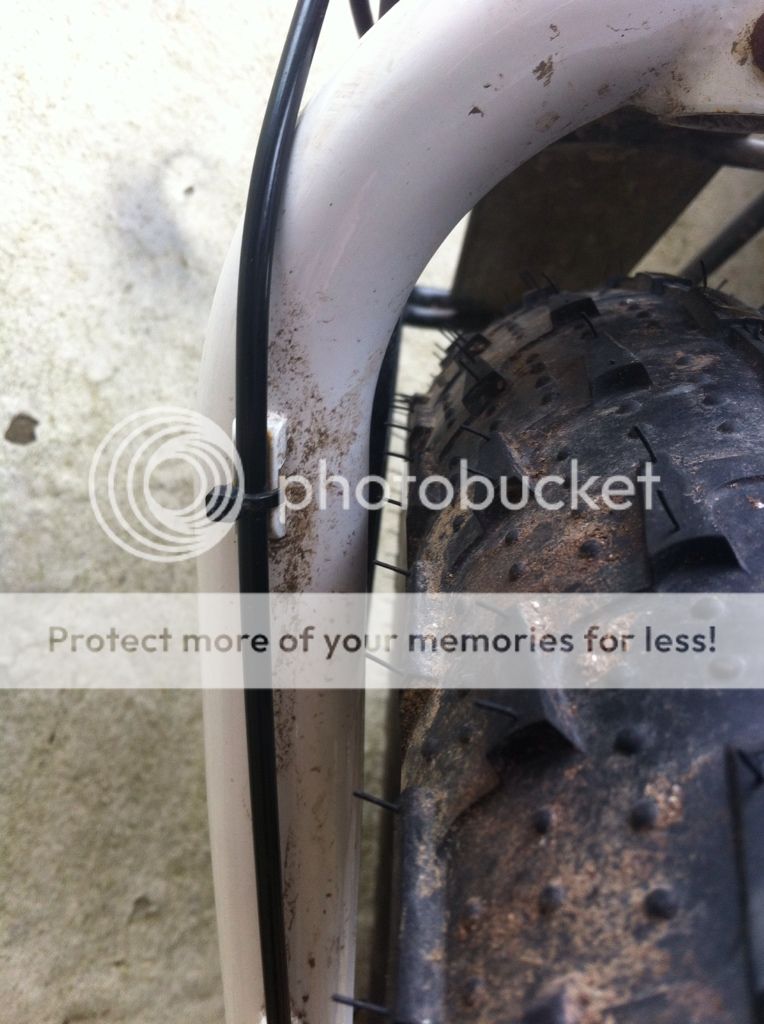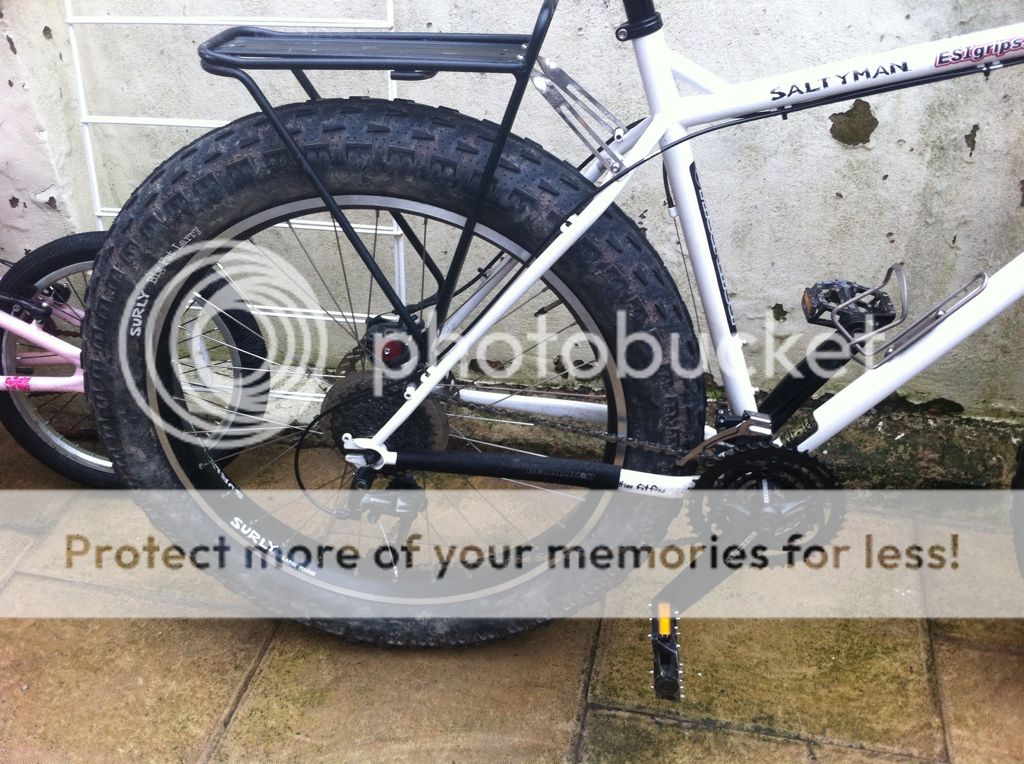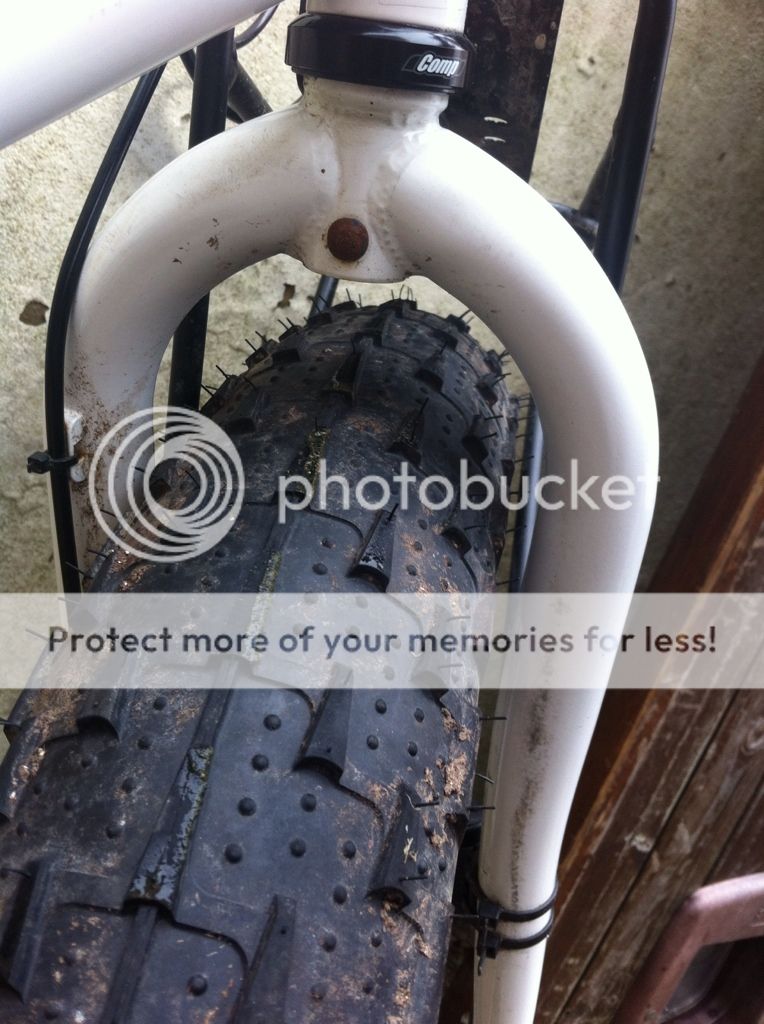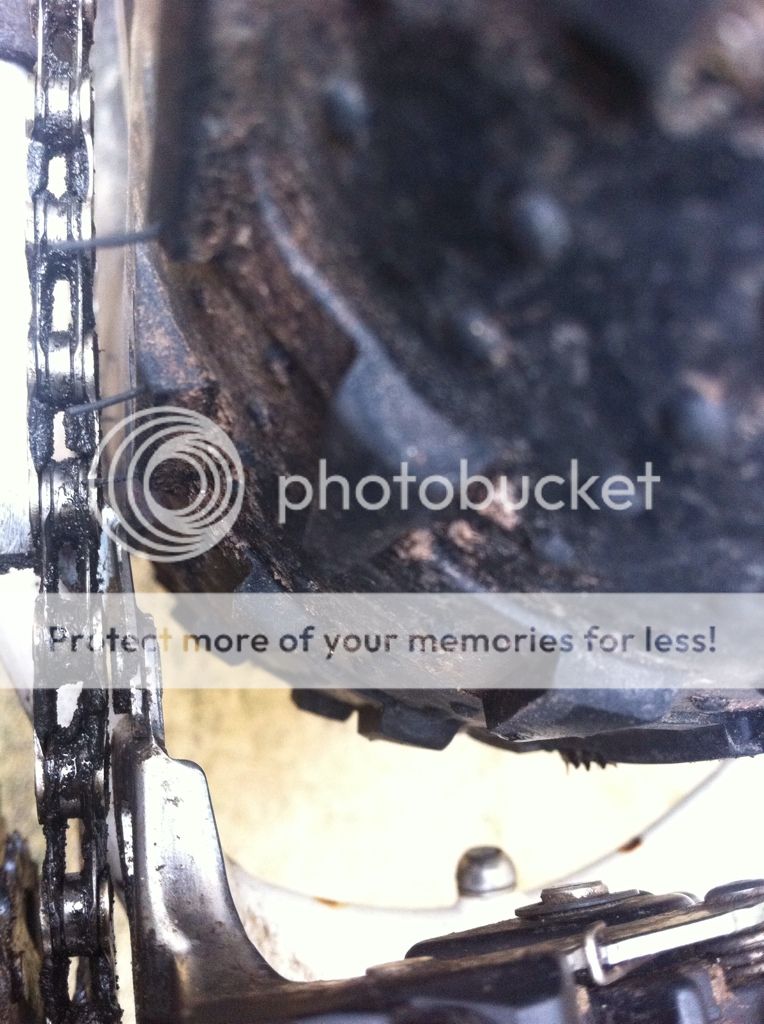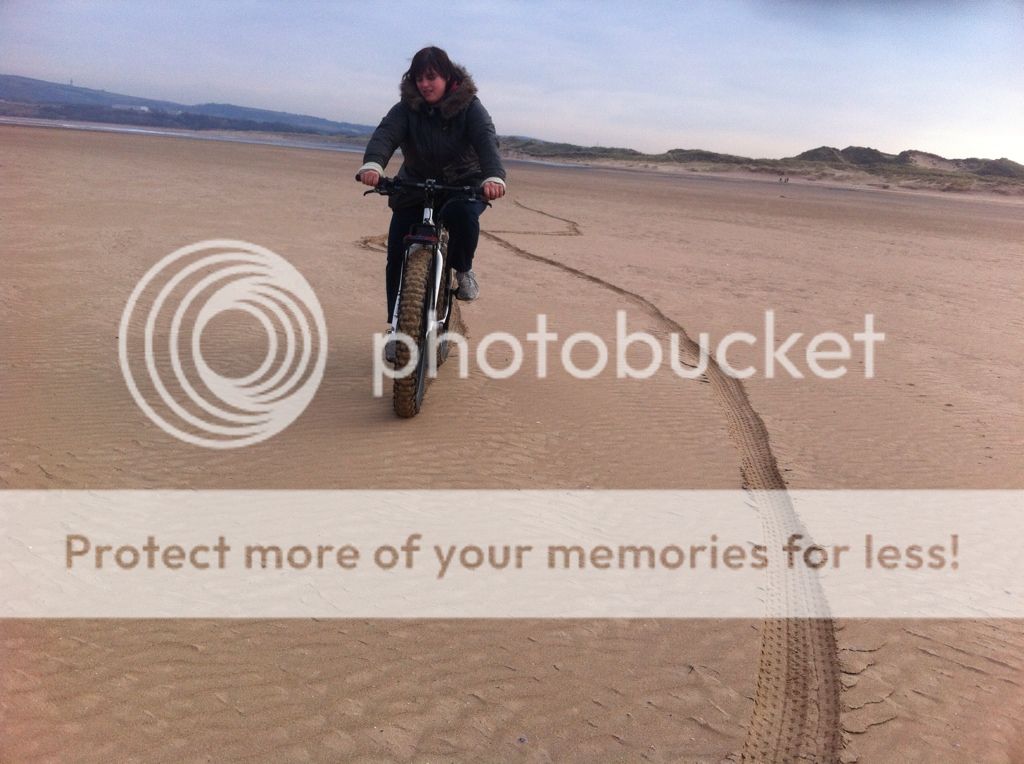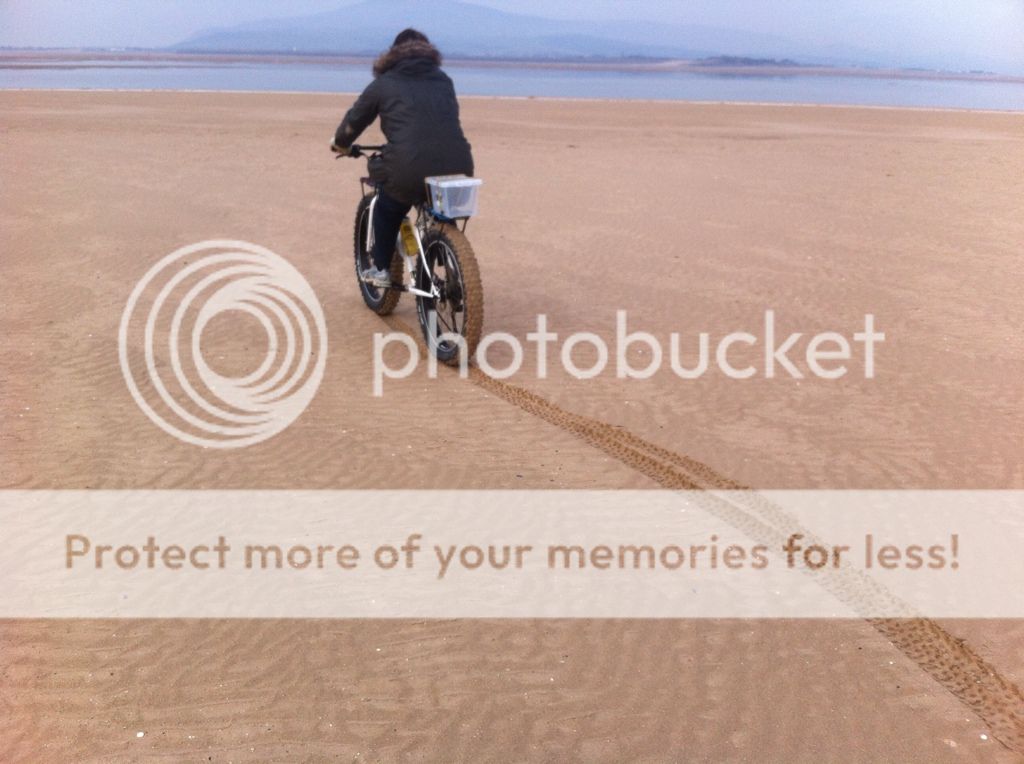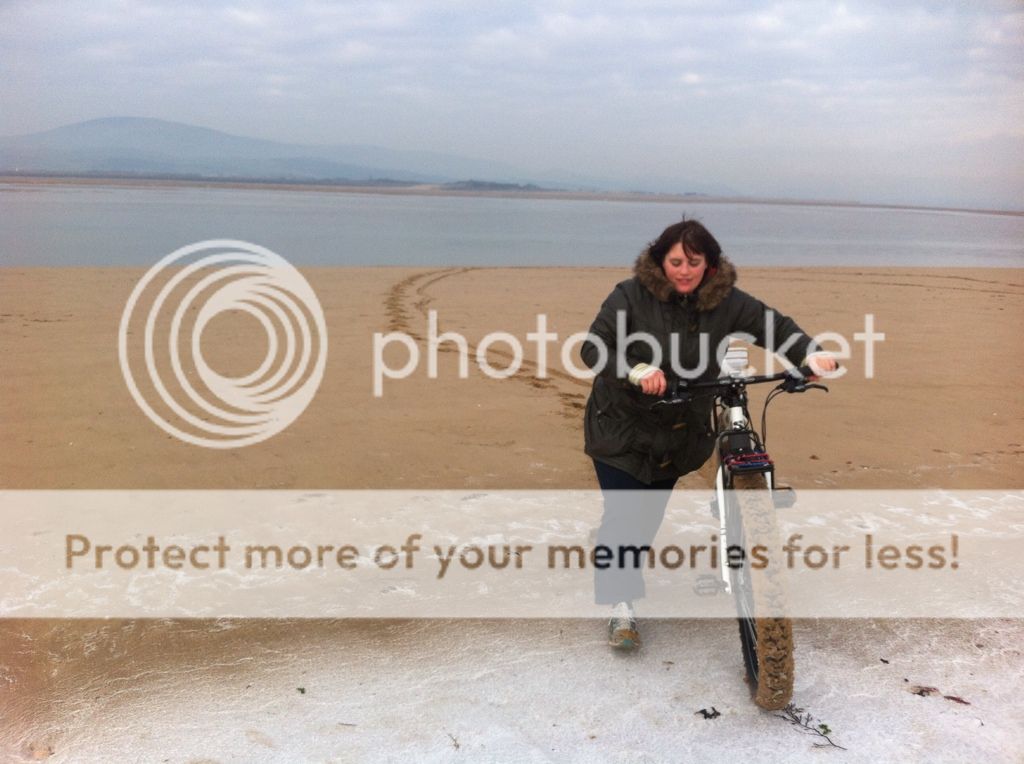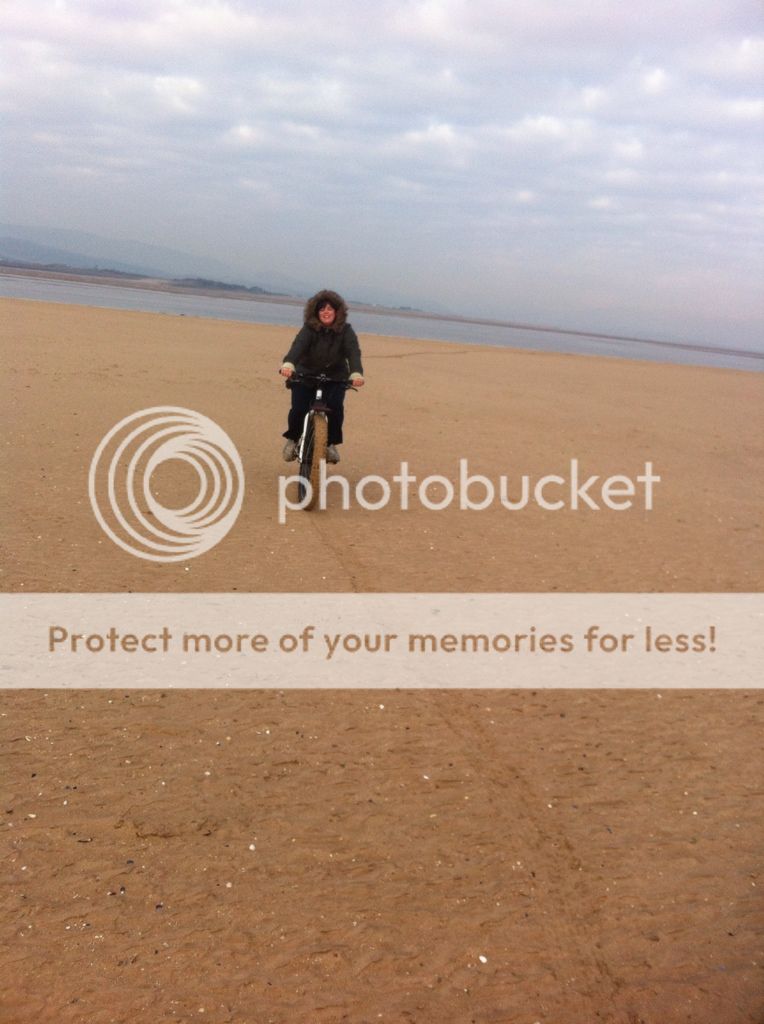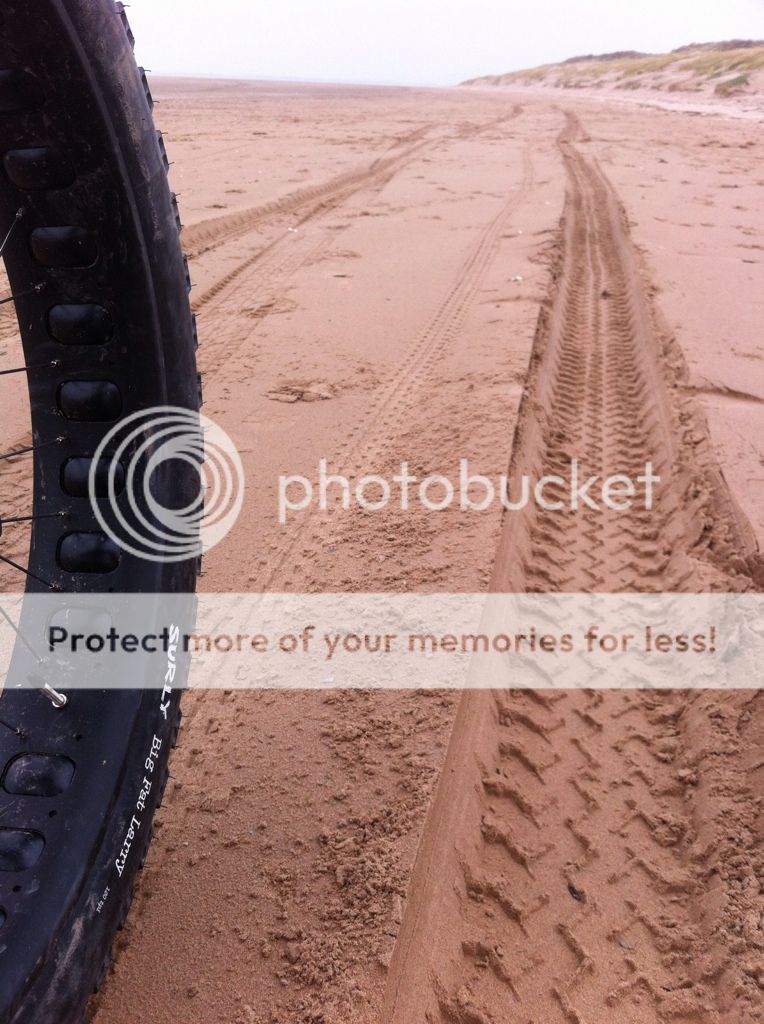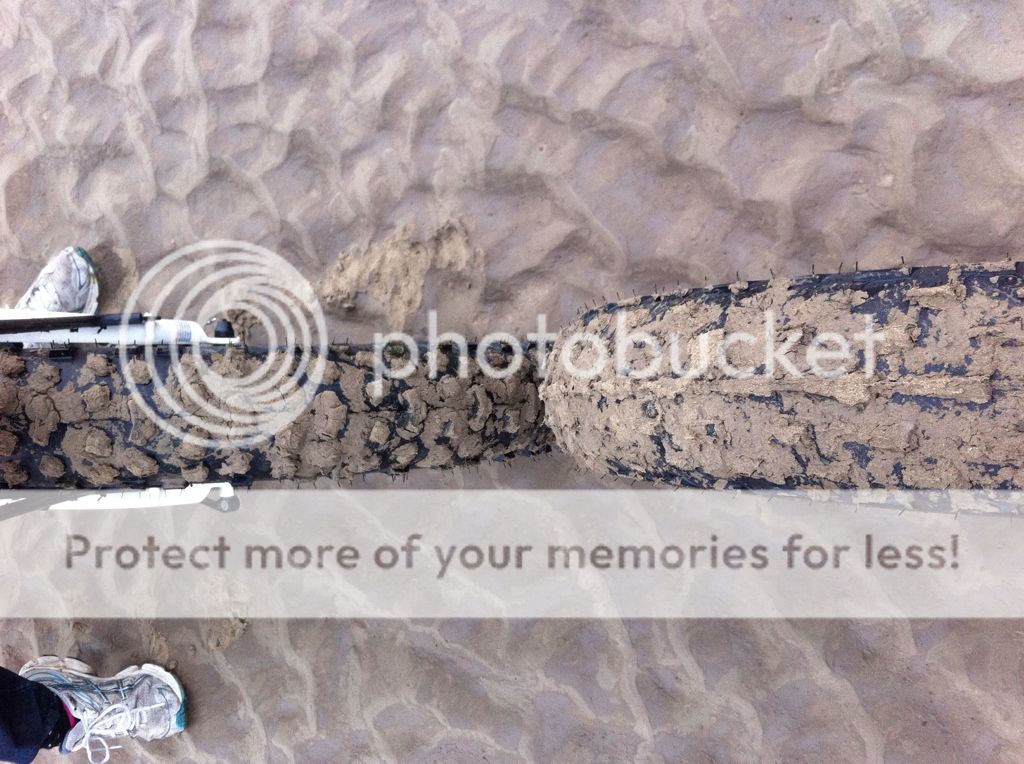graham1975":15d4oxvw said:
I just don't get the fat bikes, just wierd and i can not see how they can ride well!?
This is a theoretical response as I have never actually ridden a FatBike. It would be interesting if actual owners could comment as to whether this theory is borne out by experience. I believe that some of the hype about the capabilities of these bikes is extremely misleading.
Despite having never ridden a FatBike I have been riding Cleland bicycles for years and they share a similar ethos and also use low tyre pressures.
The Theory:
Every litre of mud, sand, or snow that is displaced by a rolling tyre weighs about 1kg. Say on soft terrain the track marks left by the tyres have displaced 1k per meter. That equates to 1000kg or one metric tonne per km of displaced materiel. And this is before you can consider energy losses due to the viscosity of the material concerned.
Quite simply put, lower tyre pressures produce a larger ground contact area and so a bike will sink into the ground less and so energy losses through rolling resistance will be reduced. Using larger wheels or fat tyres can reduce the rolling resistance further. The downside is that wide, fat, low pressure tyres can have much larger rolling resistances on smooth surfaces.
Reduced rolling resistance on hard rough surfaces.
Big volume low pressure tyres can also dramatically reduce the rolling resistance on rough hard surfaces. This is because the tyre will squish over the bumps absorbing vibration that would otherwise cause the mass of the bike to rise and fall or rotate. The energy for this vibration is subtracted from the forward speed of the bike and is much larger than that required to squash the rubber of the tyre. The mass of the moving bit of tyre is minute compared to the total mass of the bike and so very high frequency vibrations can be absorbed that no suspension systems can handle.
The bigger the air volume of the tyre the lower the frequencies that it can absorb before it hits the rim.
The Hype?
These bikes are often referred to as "Snow-Bikes" or "Mud-Bikes" but this is misleading. Fat Tyres are not best suited to all types of snow or mud.
Bellow I will list some terrain types and list the tyre type that I have found is best for each.
Soft newly fallen snow = Big wheels with thin low pressure snow tyres (or better still a ski-bike).
Intermediate snow = Big wheels with thin low pressure snow tyres (suspension is useful if the underlying ground is bumpy)
Refrozen snow = Very low pressure tyres
Hard compacted snow = Any spikey tyre at low pressure
Ice= Studded ice tyres at low pressure
Lying water = Thin rain tyres and good mudguards/flaps
Thin Gloopy mud = Big wheels with grippy low pressure tyres and good mudguards/flaps
Intermediate mud = Big wheels with fat a low pressure tyres with an open shallow tread and and good mudguards/flaps
Wet Heavy clay = Fat low pressure tyres and lots of tyre wall clearance
Sticky heavy clay = large diameter, thin low pressure tyres with an open shallow tread and at least 2" of tyre clearance
Ploughed soft soil = Fat low pressure tyres
Hard bumpy soil = Fat low pressure tyres (with suspension?)
Fine dry sand = Mega-fat low pressure tyres
Fine wet sand = Most large diameter tyres
Coarse sand = Very fat low pressure tyres
Shingle = Fat low pressure tyres
Deep gravel = Wide low pressure tyres
Shale = Fat low pressure tyres
Small pebbles = Very fat low pressure tyres
Large pebbles = Fat low pressure tyres
House brick style rocks = Fat low pressure tyres on narrow rims
Rough and hard rocky surfaces = Fat low pressure tyres
Smooth hard trails = Tacky high pressure tyres
With a Fatbike and a selection of alternative wheels and tyres you can efficiently ride all the above.
The first real all terrain bicycle? 

